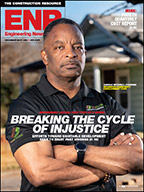This year will be another tough one for the commercial construction industry along the Wasatch Front.
General contractors, specialty contractors and suppliers alike are having to come to grips with a market being driven almost exclusively by public, municipal and infrastructure projects, and by the fact that lending institutions still have not recovered from their collapse.
Privately developed projects in all markets � retail, restaurant, office buildings and other speculative-type work � have come to a virtual halt.
�It�s no surprise that the private sector is lagging, and that will continue,� says Rich Thorn, president/CEO of the Associated General Contractors of Utah. �The majority of work we�re seeing is driven by the public sector. Contractors not well-versed in the bid market are going to have a hard time getting work.�
Richard Hunt, president/CEO of Hunt Electric of Salt Lake City, adds, �Office space is slow, and it�s like somebody turned the switch off of new high-end subdivision and resort work. The biggest obstacle is lending. There is some pent-up demand for new construction if we can solve the lending component.�
That�s unlikely to happen anytime soon, according to Howard Headlee, president of the Utah Bankers Association for the past 13 years. Headlee says ratios of capital-to-loan limits will �never go back to what they were in terms of how much leverage it took to get into a deal. Once we get used to those ratios again, we�ll proceed fairly normally.�
Headlee says that for right now and likely for the next few years, the name of the game for owners and developers is having capital, in addition to having long-term relationships with banks.
Tom Morgan, president of Morgan Asphalt of North Salt Lake, agrees that financial markets are still extremely tight. �Banks are still working through real estate-related issues, which I think will take the rest of this year and into next before seeing some progress,� he says.
Headlee says owners with good credit histories who have stuck with one banking institution through the years, are better positioned to secure future loans.
�Most banks I know, when they�re de-leveraging balance sheets, they have only so much capacity for lending,� he adds. �They reserve that capacity for their long-term, best relationships.�
Staying Positive
Construction firms are taking whatever measures necessary to ensure they not only stay in business but also remain profitable.
Thorn says that construction unemployment in Utah � approximately 80% of the state�s construction activity occurs along the 80-mile Wasatch Front corridor from Provo and Ogden � remains at 20%. He says that coping with a depressed economy requires patience, careful planning and cost-cutting.
�You have to pursue opportunities with an �all-in� effort to have a chance for succeeding,� says David Layton, president of Layton Construction of Sandy. �We�ve made a conscious effort to focus on what to pursue, and then pursue it passionately and thoroughly. It means there are some opportunities we won�t pursue � it requires a tremendous effort to be disciplined.�
Dave Hogan, president of Ogden-based Wadman Corp., says being proactive in cutting resources has been important to his firm. �It was painful to do that � it�s not something we�ve typically done at Wadman in the past, but it�s based on what is reality,� he adds. �We had to reach out to project managers and superintendents and find out on each specific job how we can be more efficient. We�ve pared our company down to the employees we need to go forward with, [those] who are totally committed to our future success.�
Hunt Electric�s CEO says his firm has stuck to �our core values of quality, integrity, performance and versatility. We�ve also had a huge focus on customer service and the timeliness of our response.�







Post a comment to this article
Report Abusive Comment